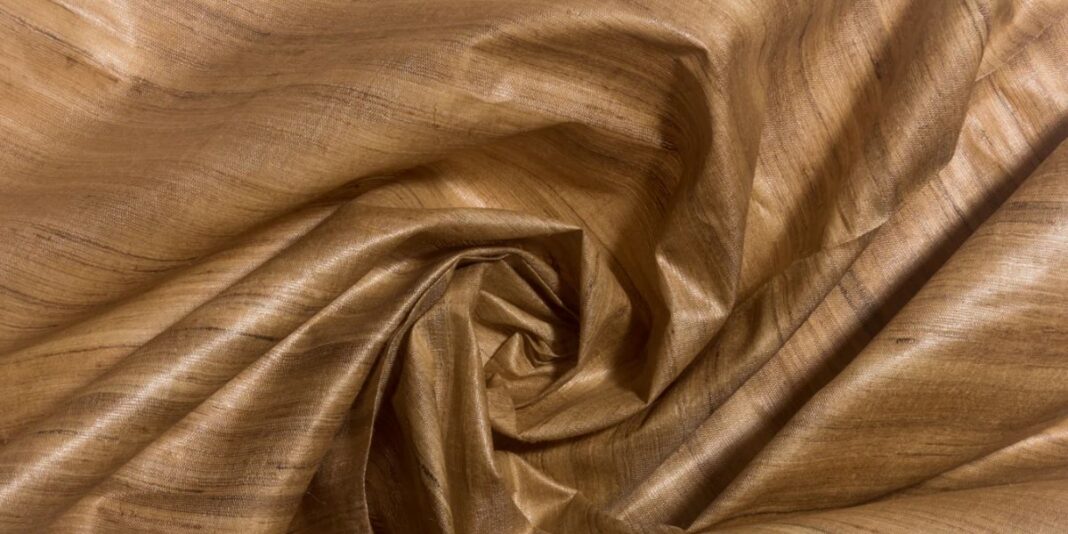An Introduction to Banana Fabrics
What is Banana Fabrics? A question widely debated by fashion enthusiasts and advocates of sustainability alike. Banana fabric is emerging as a potential alternative textile alongside the surge of demand in sustainable fabric. It seeks to fulfill the needs of the eco-friendly consumer by providing a sustainable, soft, and stylish option. This comprehensive guide will delve into the history cocomaterials and its benefits, uses, and impacts in the fashion industry. By the end, the reader would appreciate the emergent banana fabric and how it is a game-changing material in the textile industry.
Table of contents
- An Introduction to Banana Fabrics
- The Origins of Banana Fabrics
- How is Banana Fabrics Made?
- The Sustainability of Banana Fiber Fabrication
- The Fashionable Nature of Banana Fabric
- The Softness and Comfort of Banana Fabric
- Uses of Banana Fabric in Fashion
- Home Textiles and Banana Fabric
- Banana Fabric in Accessories
- Banana Fabric Vs. Other Sustainable Fabrics(What Is Banana Fabric)
- How to Wash and Maintain Banana Fabrics
- The Future of Banana Fabrics in Fashion
- Conclusion
- FAQs
The Origins of Banana Fabrics
What is Banana Fabric? It is a textile fabricated out of fibers extracted from a banana plant. The fibers originate from the pseudostem, which is the portion of the banana plant that is normally thrown away after the bananas are picked. Instead of letting such a eco-friendly resource go to waste, artisans are now able to extract fibers from such portions of the bananas plant to produce a long-lasting, sustainable fabric. This greatly helps in decreasing agricultural waste while supporting ethical fashion. Not only that, but the process of banana plantation is much greener due to the absence of need for pesticides or harmful chemicals making it more environmentally friendly. For centuries, Asian and African cultures have utilized banana fibers as raw materials for producing ropes, mat, and even clothing. Nowadays, advancements in technology have enabled the manufacturing of high-quality fabrics from banana fibers for home textiles and fashion industries.
How is Banana Fabrics Made?
Banana fabric is made from banana stems through an intricate process. To begin with, workers collect the pseudostems after bananas have already been harvested. Following this step, outer layers are removed to obtain the fibers. These fibers are then further softened through a process called retting. Once softened, the fibers are spun into yarn, which is woven into fabric. This method of fabrication is comparatively more resource efficient than that of traditional textiles, hence softer on the environment. It also helps reduce the impact on the environment while providing a fashionable alternative. The entire process also utilizes minimum machinery, making it a low energy and sustainable form of practice. Traditional artisans further add to this appeal, using their time-worn weaving techniques to weave beautiful patterns and textured fabrics.
The Sustainability of Banana Fiber Fabrication
What is banana fabric? It is an ethical fashion fabric with a high environmental sustainability index. The fabric is not only biodegradable, but also does not require a great deal of water and energy to produce, as opposed to synthetic materials. Because banana plants grow in abundance in tropical regions, there is no need for deforestation, nor do farmers need to rely on other crops. Moreover, farmers are able to earn supplementary income by selling banana stalks. This dense cycle of farming is beneficial to both the environment and the local community. With the global push towards greener fashion, banana fabric is becoming more prominent in the marketing industry. Authorities and eco-friendly organizations promote its application to help mitigate the impact fast fashion has on waste and pollution.
The Fashionable Nature of Banana Fabric
What Is Banana Fabrics? It is an exquisite and multifunctional fabric that feels like it is made from the finest material. Designers appreciate it for having the supreme texture of silk and natural luster. In addition, it has excellent draping qualities, making it appropriate for high fashion pieces. It has a sophisticated drape whether made into a dress, scarf, or coat. The ability to absorb natural dye also makes it vibrant. It is no wonder that banana fabric is increasingly sought after by sustainable fashion labels because of its endless designs. It is also very useful for ethical fashion advocates since it can substitute expensive silks and linens.
The Softness and Comfort of Banana Fabric
What Is Banana Fabrics? It has an exquisite softness which permits maximum comfort. The fact that banana fibers are smooth allows them to be made into soft fabrics. This property makes the material suitable for clothing, bedding, and accessories. Unlike other materials, it does not suffocate the skin. It also lightweight and thus ideal in hot weather. Style and comfort can easily be achieved by choosing banana fabrics. In addition, it is safe for sensitive skin which makes it dermatologically tested. For everyday use, it is an excellent choice because the fabric helps the wearer to remain dry and comfortable.
Uses of Banana Fabric in Fashion
What is Banana Fabrics? Fashion and beauty designs have dresses, suits, and blouses made out of banana fabric because of its durability and elegance. It is also popularly used in scarves, shawls, and handbags. Many sustainable brands embrace banana fabric because of its eco-friendly appeal. It is a cruelty-free substitute to silk and synthetic textiles. With its versatility, it continues to redefine fashion trends. Proving that sustainability and luxury go hand in hand. High-end fashion brands are also using banana fabric, as they experiment to create exclusive collections.
Home Textiles and Banana Fabric
What is Banana Fabrics? It does not stop at clothing. Many people use it for curtains, cushion covers, and upholstery decor. It soft and breathable, thus, providing a luxurious touch to interiors. Additionally, herculean banana fabric is wrinkle resistant, making it easier to maintain. By incorporating banana fabric into home textiles, consumers eliminate waste. It is an excellent investment for home furnishings because his durable fabric ensures long lasting quality and beauty.
Banana Fabric in Accessories
What is Banana Fabrics? Wonderful banana fibers are among the best materials for bag, hat, and belt construction. Ethical brands also make handbags and wallets out of it. It is a leather substitute that is fashionable and strong. Furthermore, its natural appeal enhances the uniqueness of the accessories. The integration of banana fabric in accessories helps achieve style without compromising on ethics. Banana fabric accessories are highly advocated by sustainable fashion influencers as essentials for people who want to look good while consciously protecting the environment.
Banana Fabric Vs. Other Sustainable Fabrics(What Is Banana Fabric)
What is Banana Fabrics? The distinguished feature of banana fabric compared to other sustainable fabrics is its comprehensive eco-friendly advantages. It does not use up as much water and chemicals as the cotton fabric does. It does not emit damaging microplastics like polyester does. Furthermore, its ability to biodegrade set it apart from synthetic materials. While bananas and hemp are also eco-friendly, the distinguishing characteristic of banana fabric is its unparalleled texture. Its luxurious feel makes it a top choice for lovers of ethical fashion. The way banana fabric is made is much healthier for the planet than the way bamboo fabric is made, which is loaded with harsh chemicals.
How to Wash and Maintain Banana Fabrics
Banana fabric can be described as an awesome combination of being soft and durable at the same time. Giving the fabric a gentle wash using a mild detergent preserves its texture and handwashing or washing it in a machine on a gentle cycle increases its longevity. Also, avoiding harsh chemicals retains its natural fibers. It can also air dry which is the best option because of how fast it dries. Lastly, banana fabric can be versatile for years as long as it is taken care of. The fabric can also be ironed at low temperatures and will keep its smooth texture, beauty, and durability over long periods of time.
The Future of Banana Fabrics in Fashion
Banana fabric has the potential to be the future of sustainable fashion which is an ever-growing industry. It is already increasing in popularity because more brands tend to use and adapt more sustainable and ethical practices. Innovations in production techniques make it even more accessible, so the growing demand for ethical practices and fabrics is welcome. With more softness and style, banana fabric will change not only the fashion industry but business practices as well. It creates a more sustainable and ethical future which comes as a benefit so a wider movement can be made in regards to using this fabric. Researchers also have goals to make blended versions of the fabric with other sustainable fibers so they can be used in multiple industries.
Conclusion
What is Banana Fabric? It is a new type of fabric that is as soft as it is stunning and sustainable. As a banana fabric, it will benefit the fashion industry and nature at the same time. It can be made into clothes, shoes, jewelry and even used to beautify the house. In addition, it provides very little waste as it is biodegradable. When people purchase banana fabric, they help in making sustainable fashion more accessible. Try to make the switch now and enjoy the wonders of banana fabric!
FAQs
Banana fabric is strong and durable, making it suitable for clothing, accessories, and home textiles.
Absolutely! Banana fabric is hypoallergenic and breathable, making it perfect for people with sensitive skin.
You can find banana fabric clothing, accessories, and home textiles from sustainable fashion brands and online retailers.



The process of making banana fabric is fascinating. It’s amazing that we’re able to create such a stylish, soft material while being mindful of the environment. I’m curious if the fabric is also as durable as it is sustainable?